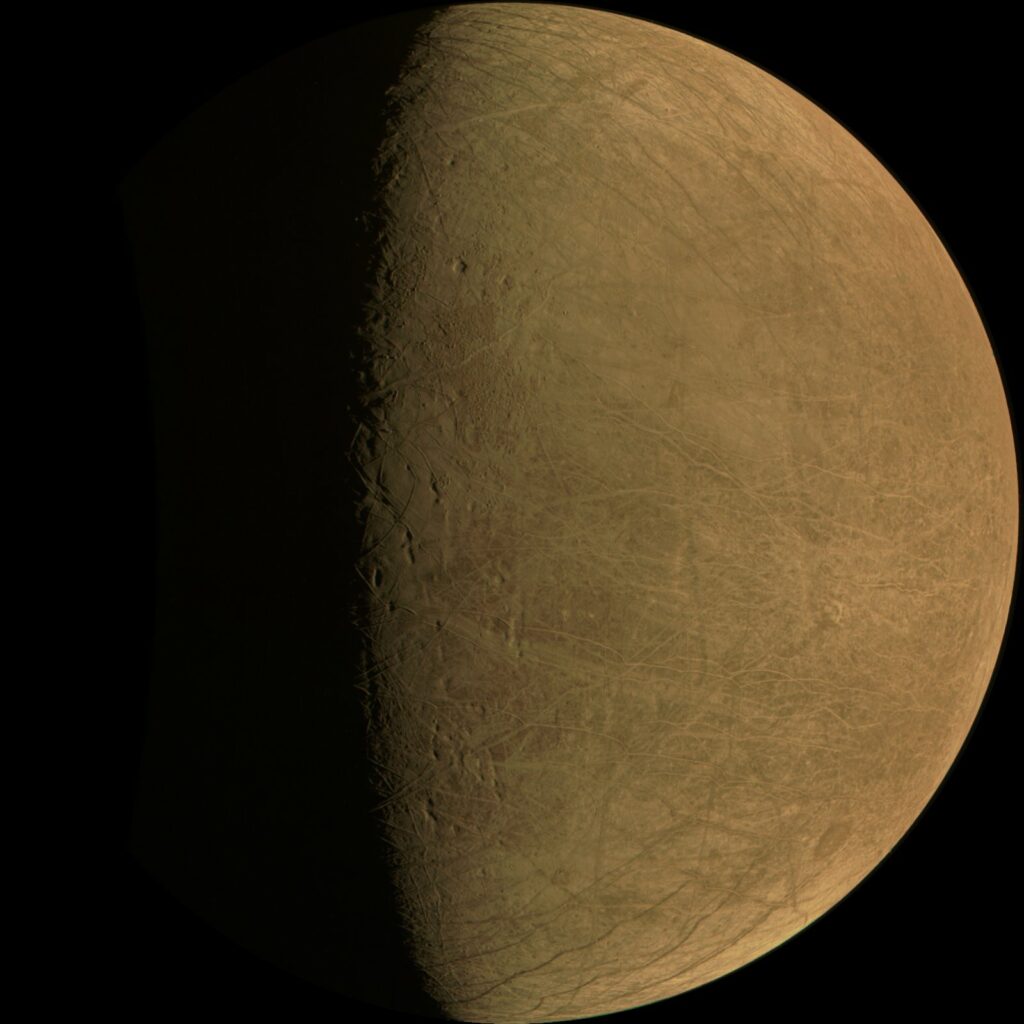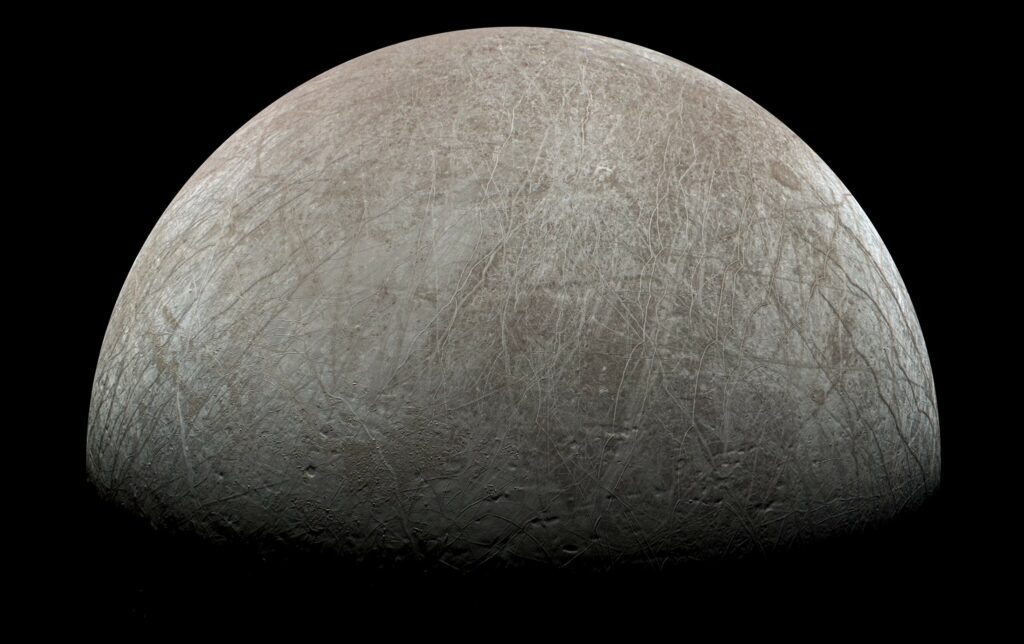NASA published the first images taken by the Juno probe on September 29. On them, you can see Europa — the fourth largest moon of Jupiter, under the icy surface of which a giant ocean hides.

On September 29, the Juno probe made a close flyby of Europa. The Earth messenger passed at a distance of only 358 km from the surface of the moon. Of course, NASA used this unique opportunity to get detailed photos of its surface, as well as to make a number of measurements.
Thanks to the lighting conditions, the pictures taken by Juno clearly demonstrate the main features of the surface of Europa. Unlike most other icy moons of giant planets, there are practically no large impact craters on it, which is associated with the presence of a subsurface ocean. At the same time, the surface of Europa is dotted with numerous cracks, ridges of depressions and ice formations resembling hills.
These are the first detailed pictures of Europa taken in the XXI century. The last time such a close visit to the moon was carried out by the Galileo device in 2000. At the same time, its main antenna did not work, and NASA received much less scientific data and images than it could. Therefore, the data collected during the last Juno visit is extremely important for both scientists and engineers involved in the preparation of the Europa Clipper mission, which launch is scheduled for 2024. Its main goal will be to study Europa and assess the potential viability of its ocean.

It should also be noted that during the last maneuver, Juno took advantage of Europa’s gravity to reduce the perihelion of its orbit from 43 to 38 days. Thanks to this, in 2023 and 2024, the probe will be able to carry out two close flights of another, very curious moon of Jupiter. We are talking about Io, which is famous for its volcanic activity. As in the case of Europa, scientists are looking forward to this event, which is able to shed light on a number of features of this unusual world.
According to https://www.nasa.gov
Follow us on Twitter to get the most interesting space news in time
https://twitter.com/ust_magazine

